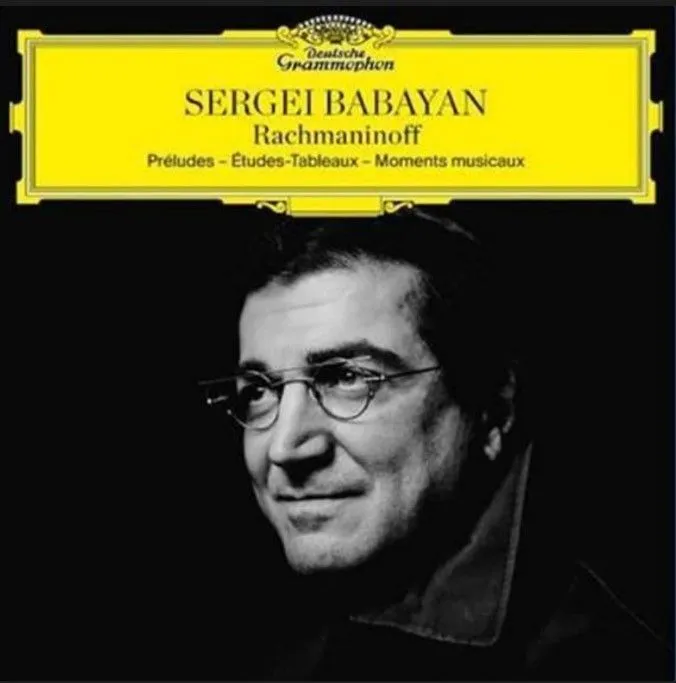
Rachmaninov Preludes; Etudes-Tableaux; Moments Musicaux Sergei Babayan (piano) DG 483 9181 58:26 mins
There’s some extraordinary playing on this beautifully recorded disc. The Armenian-born American pianist Sergei Babayan exhibits a profound empathy for Rachmaninov’s music, revelling in its richness of sonority, its contrasting moods of elation and melancholy and its structural fluidity. His recital eschews conventional practice which at least on disc tends to favour complete cycles of the Preludes or the Etudes-Tableaux. Instead, we have a mixed programme that dips in and out of these works, but also highlights some less well-known miniatures, including two gems from the early Moments musicaux Op. 16.
Although some listeners might understandably want to zone in on their own favourite pieces, it’s a far more worthwhile experience to listen to the album programme right through as a cycle in its own right. Indeed, Babayan has cleverly devised it with this in mind. So although we get suitably varied contrasts in mood and tempo between adjacent tracks, the cumulative effect of the programme as a whole emphasises unexpected connections between works that were composed at different times in the composer’s career.
But apart from Babayan’s astute programming, what really binds the recital into an utterly compelling musical experience is the sheer range and tonal variety of his pianism. He can be intimate and reflective, mesmerising the listener with the shimmering sounds of the famous G sharp minor Prelude Op. 32, the veiled almost Debussy-like sonorities of the A minor Etude-Tableau Op. 39 with its obsessive allusions to the fateful Dies Irae motive, or the doom-laden echoes of Russian Orthodox Church Music in the B minor Prelude Op. 32. Yet Babayan is equally spellbinding at the opposite end of the dynamic spectrum, as in the whirlwind passage work of the F minor Prelude Op. 32 or in the E flat minor Etude-Tableau Op. 39 where he unleashes a veritable torrent of sound which manages to emulate the depth and grandeur of a full symphony orchestra.
Another notable aspect of Babayan’s interpretations is his remarkable manipulation of tempo which fluctuates in such a pliable manner that it gives the impression he is playing written-out improvisations. Take for example his performance of the A flat major Prelude Op. 23 which opens the recital. As one might expect, Babayan caresses the limpid flourishes in the right hand and brings requisite warmth and tenderness to the sonorous cantabile melody. But the most striking aspect of his interpretation is the way in which he controls rubato, communicating a sense of wonderment when Rachmaninov strays into unexpected and distant keys in a manner that recalls Schubert. An equally thrilling example of Babayan’s interpretative spontaneity comes in the demonic Etude-Tableau in C minor Op. 39/1. Here Babayan grasps the nettle by hurtling us full speed ahead to the very edge of a cliff – the fluid manner in which he dispatches those accelerating chords near the end of it vividly communicates the sense of danger that underpins this music.
Erik Levi